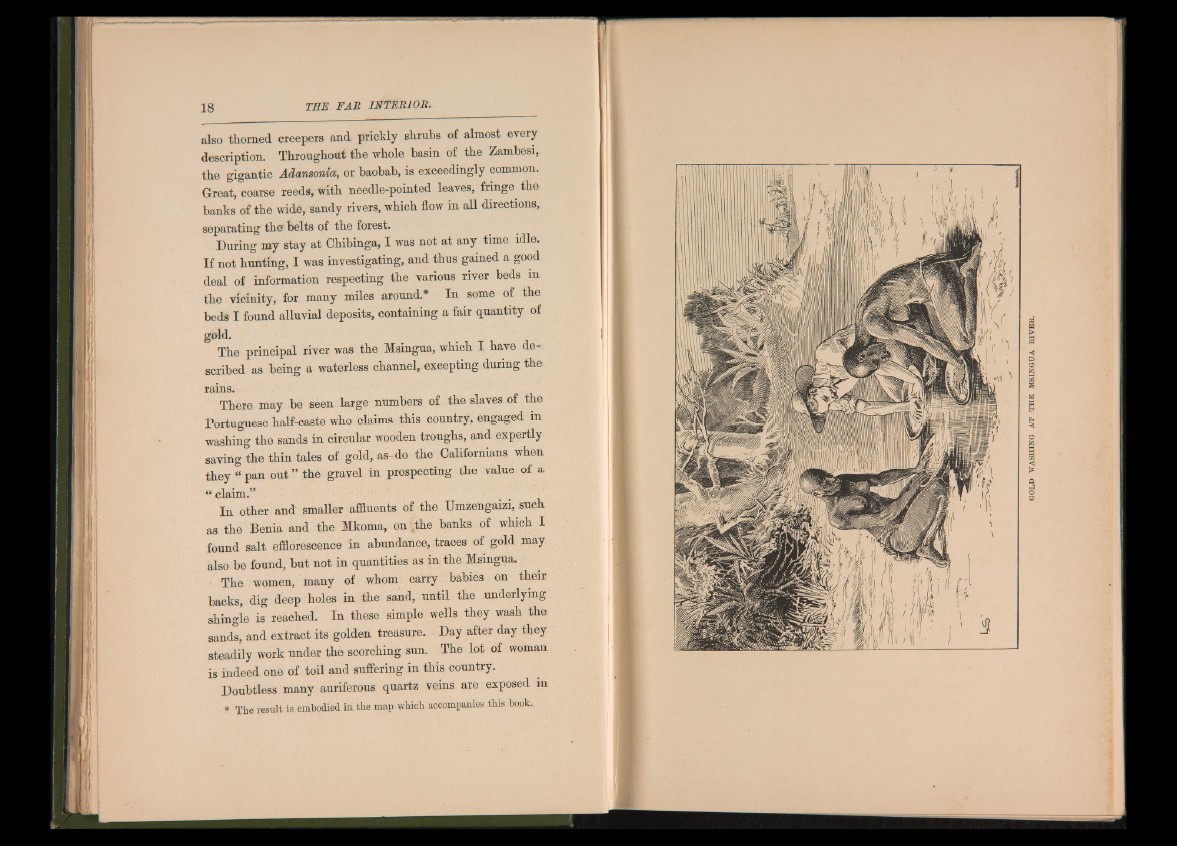
also thomed creepers and prickly shrubs of almost every
description. Throughout the whole basin of the Zambesi,,
the gigantic Adansonda, or baobab, is exceedingly common.
Great, coarse reeds, with needle-pointed leaves, fringe the
banks of the wide, sandy rivers, which flow in all directions,
separating the belts of the forest.
During my stay at Chibinga, I was not at any time idle.
If not hunting, I was investigating, and thus gained a good
deal of information respecting the various river beds in
the vicinity, for many miles around* In some of the
beds I found alluvial deposits, containing a fair quantity of
gold.
The principal river was the Msingua, which I have described
as being a waterless channel, excepting during the
rains.
There may be seen large numbers of the slaves of the
Portuguese half-caste who claims this country, engaged m
washing the sands in circular wooden troughs, and expertly
saving the thin tales of gold, as-, do the Californians when
they “ pan o u t” the gravel in prospecting the value of a
“ claim.”
In other and smaller affluents of the Umzengaizi, such
as the Benia and the Mkoma, on - the banks of which I
found salt efflorescence in abundance, traces of gold may
also be found, but not in quantities as in the Msingua.
The women, many of whom carry babies on their
backs, dig deep holes in the sand, until the underlying
shingle is reached. In these simple wells they wash the
sands, and extract its golden treasure. Day after day they
steadily work under the scorching sun. The lot of woman
is indeed one of toil and suffering in this country.
Doubtless many auriferous quartz veins are exposed in
* The result is embodied in the map which accompanies this hook.